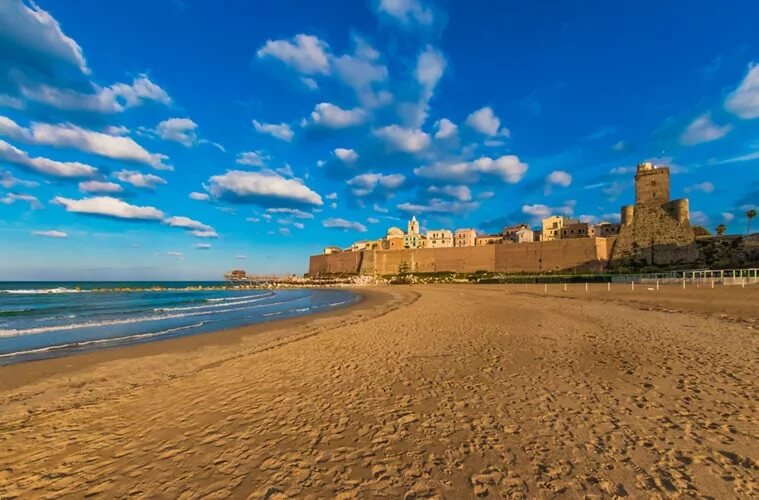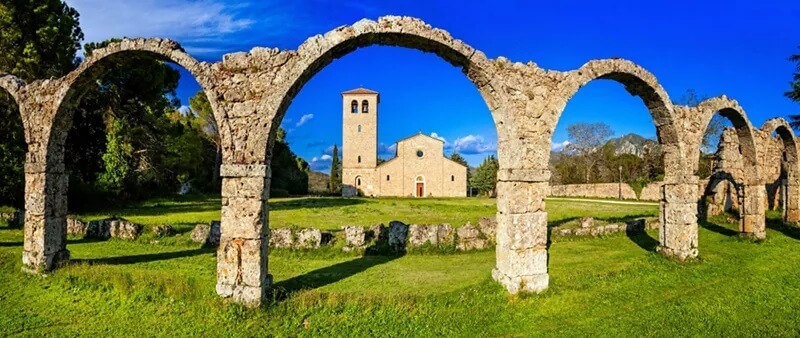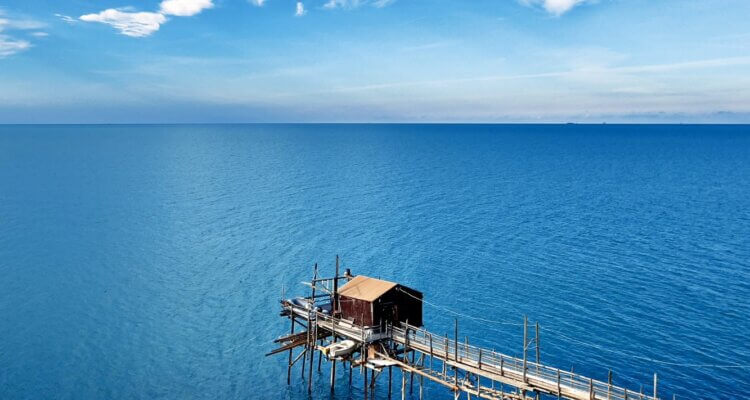Molise is a region steeped in history, characterized by numerous tasty food and wine delicacies, but also by rich nature reserves and villages that seem crystallized in history. A destination still undiscovered, with marvelous seashores and breathtaking high cliffs.
The small region on the lower Adriatic coast is still one of the insider tips of the Apennine Peninsula: over just 90 km / 56 miles from the mountains to the sea. The impressions of mountain panoramas, lush landscapes with vineyards and olive groves and the long sandy beaches of the Mediterranean merge into a colorful overall picture.
Bathing fun on the coast, art monuments, charming little villages and hiking opportunities on traditional paths such as the Tratturi – ancient cattle paths for grazing – make the Molise region a varied vacation destination.
Molise, the region of sheep tracks and magnificent landscapes
This small but generous region of pristine nature boasts a long history, a rich artistic heritage, ancient traditions and delicious gastronomy.
Molise is still a little-known destination, which only serves to make it all the more interesting! For sure you will enjoy exploring its ski resorts, hills, coastline with sandy beaches, historic transhumance routes and countless nature reserves that protect the plant and animal species that live in the area.
Molise is embedded by neighboring regions Abruzzo, Lazio, Campania and Puglia. Although it doesn’t have any famous and spectacular beach towns, it is located on the Adriatic Coast. Molise is the second smallest region of Italy, in terms of area and population after the Aosta Valley.
The main cities of Molise
Termoli is an ancient town with fortified walls, dominated by the imposing Swabian Castle and awarded Europe’s Blue Flag on numerous occasions thanks to the marvelous clarity of its sea. At this popular destination, you can find sports facilities, state-of-the-art hotel services and well-equipped beaches.

Campobasso, the capital of the region, offers truly unique views. Among its iconic symbols are the Castle Monforte, a national monument and the city’s highest point perched on top of a hill; the Church of San Giorgio, dating back to the 12th century and boasting a Gothic style; and the Church of Sant’Antonio Abate, with its beautiful late-Renaissance façade and lavish Baroque interior.
The province is home to countless archaeological finds, such as the village of Campomarino, which dates back to prehistoric times, and numerous necropolises.
Isernia, the capital of the Samnite peoples, has a very ancient history, told today through its narrow, traditional alleyways.
The Fontana Fraterna (“Fraternal Fountain”) is one of its best-known monuments in the area: it has six water jets and a fascinating loggia shape made of limestone blocks, most likely from ancient Roman monuments. Finally, Ferrazzano is a village known for its houses that all seem to embrace one another: they are built very close together to protect from the cold weather. Located in a strategic position on the ancient Molise communication routes, it offers wonderful views
What to see in Molise
During a vacation in Molise, it is well worth taking the time to visit Campitello Matese, a ski resort with 40 kilometers / 25 miles of slopes, rich in lakes, forests, caves and grottos, and meadows, as well as unique paths ideal for walking, horse riding, mountain biking or quad biking, and even paragliding.
A trip to the province of Isernia gives you the opportunity to admire the Abbey of San Vincenzo al Volturno. This ancient monastic building where time seems to stand still brings together history, spirituality and pristine surrounding nature.

While in the area, be sure not to miss out on a visit to the well-kept Lake of Castel San Vincenzo in the Abruzzo, Lazio and Molise National Park, where you can see the peaks of the Mainarde Mountains reflected in the sparkling turquoise water, surrounded by forests. Though it does not look artificial, it was built in the late 1950s as a means of generating hydroelectric power.
Fornelli, one of the most beautiful villages in Molise, definitely deserves a stop. Known as the Land of Towers from the Norman and Angevin periods, but also as the City of Oil, thanks to the excellent quality of the oil produced in its countryside, it boasts a historical center and urban structure that have remained unchanged over the centuries.
Unusual places in Molise: 3 destinations for curious visitors
Intrigued by destinations off the beaten tourist track?
Try searching for the tratturi, ancient beaten-grass sheep tracks along which shepherds, from pre-Roman times until a couple of centuries ago, would move their flocks each season. This well-known phenomenon of the transhumance of livestock has marked the rural South by following strict routes and ensuring an economic livelihood even in the most isolated areas.

Or you can keep an eye out for the Sanctuary of Castelpetroso in the province of Isernia. Looking like a medieval castle, it stands in the middle of the woods and has a history of alleged apparitions of the Virgin Mary, dating back to 1888, when the Virgin is said to have appeared with the bleeding Jesus in her arms as an offering to humanity.
Finally, it is also worth visiting Sant’Angelo Limosano, a village sat on a hill 900 meters / one mile above sea level that dominates the Biferno valley, offering panoramic views that even reach as far as the Tremiti Islands, weather permitting.



